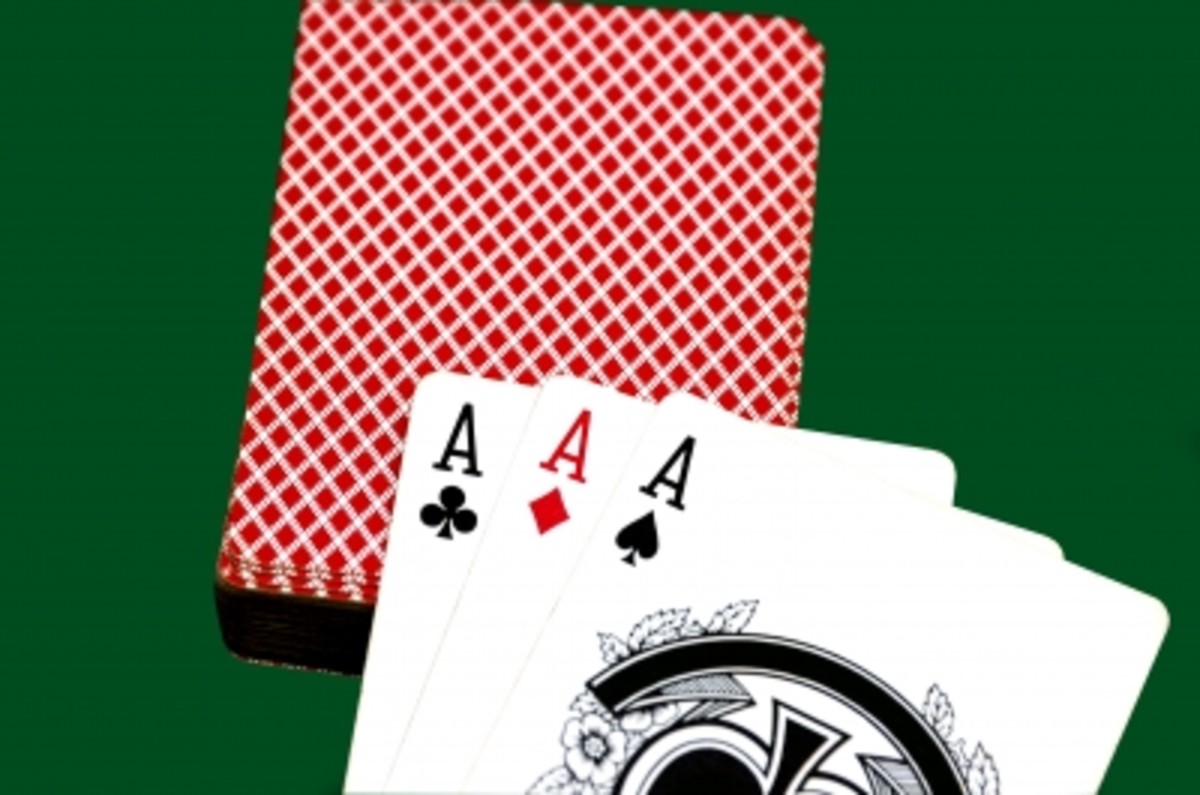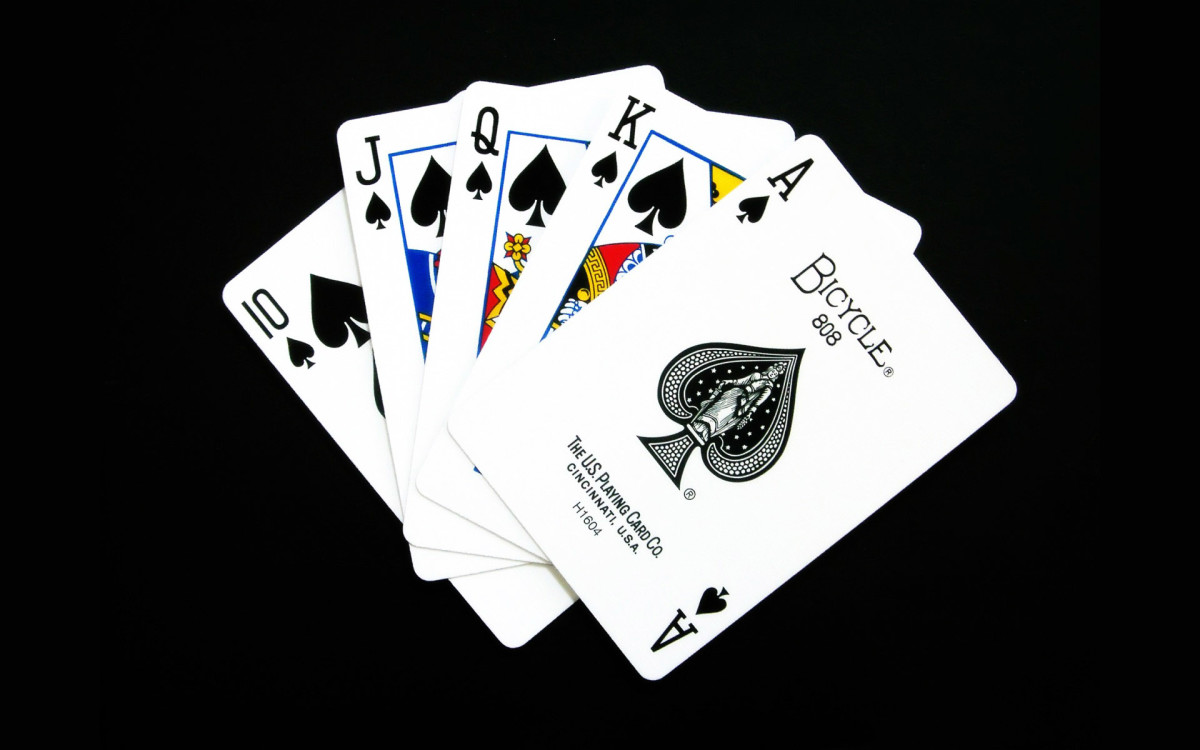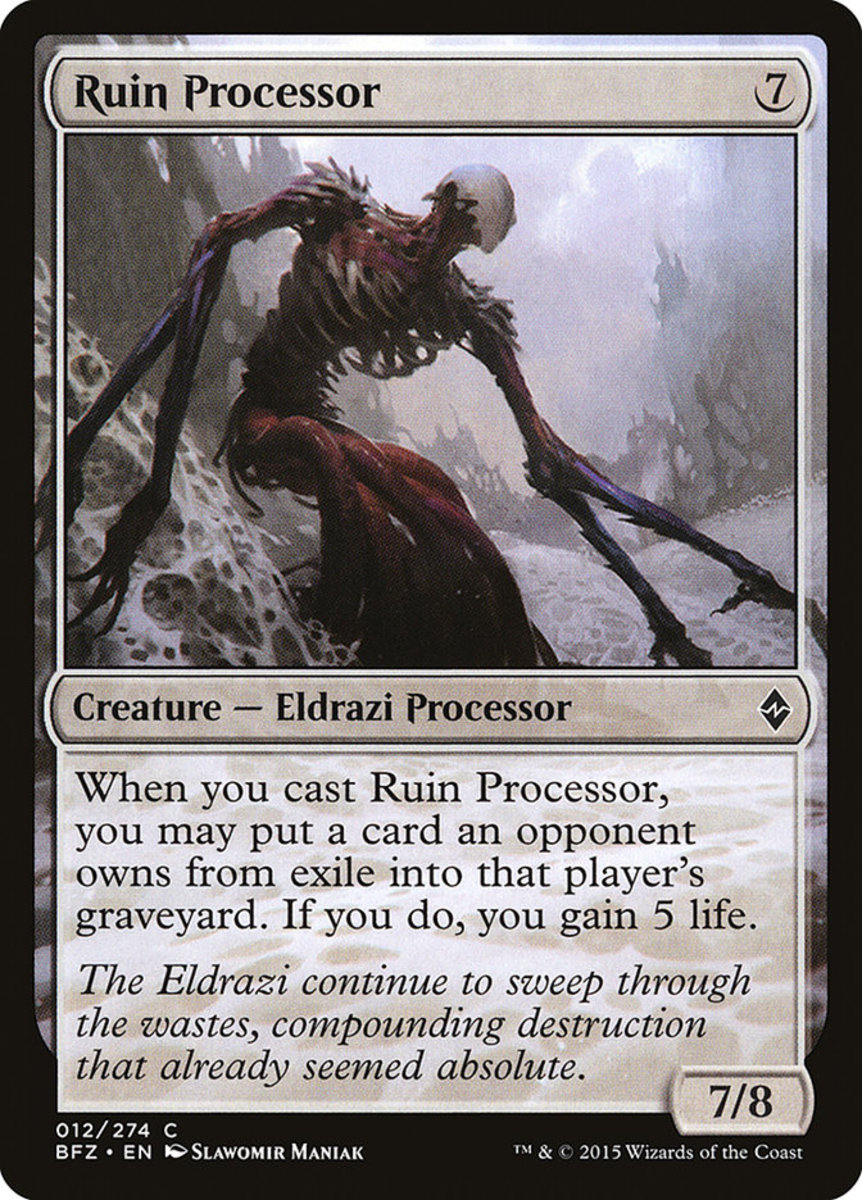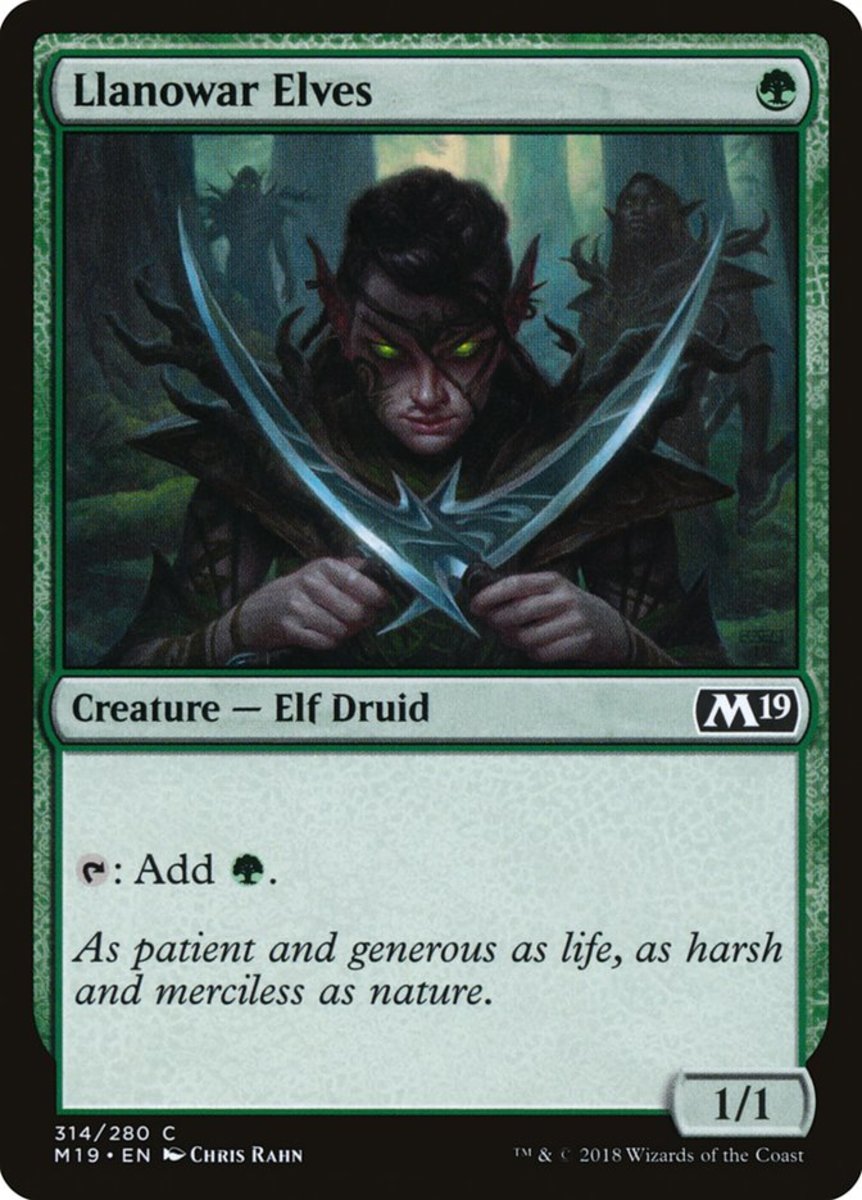Playing Hearts and Gin: A Short History
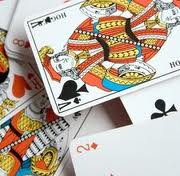
Its History
Early playing cards are believed to have originated in china, where paper was first invented, as a form of paper dominoes. The earliest references to playing cards in Europe featuring decks with four suits date from 1377. Cards back the were very expensive, as they were hand-painted, and they looked quite different from the design of cards that we have today.
The earliest cards from China had designs recognzable to players of Mah Jong: coins, or circles; and bamboo, or sticks. On their way from China to Europe, cards passed through the islamic empire, where they gained cups, swords and court cards. Once in Europe, the generic court cards evloved into depictions of actual kings, knights, and other royalty- hence the name "face cards." The Italian, Spanish, German, and Swiss cards did not include a queen- and in fact, even today, they still do not.
The basic familiar design of the cards- with hearts, diamonds, spades, and clubs, and court cards of Jacks, Queens, and Kings- came from France, and with the invention of woodcuts in the 14th century, mass-production became popular all across Europe. Cards became popular in America as well, and Americans began refining card design around 1800.
It was an American invention to create double-headed court cards, so that the kings, queens, and jacks never needed to be turned upright; to index the cards by placing the number and suit in the corner for easy reference; to varnish the surface of the cards for easier shuffling and durability; and to round the corners, which always seemed to get bent over anyway. It was in America, too, that the Joker was born, as became an opportunity for satire- depicting popular political figures as jesters or clowns- and for advertising, which savvy marketers had already plastered on the back of the cards.
There are hundreds of games that can be played with cards. Here are two popular and fun games for four or two people: Hearts and Gin.
Hearts
Hearts is a trick-taking game for four players in which the object of the game is to avoid winning tricks (a set of cards) containing Hearts or the Queen of Spades. Hearts began its life in Spain around 1750 in a game called Reverse, the point of which was to lose tricks, not gain them. Eventually, about 100 years later, Reverse fully morphed into the game we know today as Hearts.
"Tricks" are rounds of play in which each player puts a card face up on the table, and the player with the highest card wins all the cards- also called "trick-taking." But the real trick in this trick -taking game is that in Hearts, players want to avoid winning tricks, because the lowest score wins.
Hearts uses a standard 52-card deck. Aces are high, and there is no trump suit. To start, the dealer deals the cards clockwise so that all players have 13 cards each. Each player then chooses three cards to pass: on the first hand, the cards are passed to the left; on the next hand, the cards are passed right; on the third hand, cards are passed across; and on the fourth hand, no cards are passed. Cards are passed stacked face-down, and players must choose and pass their cards to the correct player before they can look at the cards passed to them.
The player who has the 2 of Clubs goes first and must "lead," or put down, that card. The play goes clockwise, with all the other players following suit ( putting down a card of the same suit), if possible. That means each player must put down a Clubs card- if a player doesn't have any Clubs in this first hand, she can play any other card except for Heart or the Queen of Spades. The player with the highest card takes the trick ( stacking the cards face down next to her) and starts the next round. After the first trick, a Heart or the Queen of Spades can be used if a player deosn't have a card in the suit being led. Hearts can only be led ( that is, be the first card in a trick) after a Heart has been "broken" - played on a trick where a player couldn't follow suit.
Play continues until all the cards have been played. Then you add up the points for each player. Each Heart card gets 1 penalty point, and the Queen of Spades gets 13 penalty points. The game is over when at least one person has 100 points or more, and the winner is the player with the lowest score.
But there is one last "trick" to be played in Hearts: a player can do something called "Shooting the Moon." That is when one player takes all the point cards (all Hearts and the Queen). The player who does this has her points reduced to zero, and everyone else automatically gets 26 points added to their score.
How to play Hearts the card game
Sample Hand of Hearts 1
How to Play Hearts for Novice Players : Hearts Card Game Strategy
How to Play Hearts for Novice Players : The Rules of Hearts Card Game
How to Play Hearts for Novice Players : The Queen of Spades in Hearts
How to Play Hearts for Novice Players : All About Passing Cards in Hearts
How to Play Hearts for Novice Players : Hearts Card Game Strategy
The Purpose of Passing Cards in Hearts
The Importance of the Queen of Spades in Hearts Card Game
How to Play Hearts for Novice Players : How to Pass the Queen of Spades
How to Play Hearts for Novice Players : Shooting the Moon in Hearts
How to Play Hearts for Novice Players : When to Shoot the Moon in Hearts Card Game
How to Play Hearts : Good Starting Hand for Shooting the Moon in Hearts Card Game
Gin Rummy
This two-player card game is said to have been created by a man named Elwood T. Baker, who was inspired by an 18th-century game called Whiskey Poker. Gin rummy became popular in America in the 1930s, when Hollywood stars began playing the game in much the same way that celebrity poker is played today.
To play the game, you need a standard 52-card deck, and a pen and a pad of paper to keep score. You also need to know a bit of card talk to understand the game.
Gin Vocabulary
Combination
Two cards of the same rank, such as 2-2; or consecutive in the same suit, such as 2-3 of Clubs.
Deadwood
Cards that are not a part of any meld.
Gin
Ten melded cards.
Knock
To end the round.
Layoff
Getting rid of deadwood by incorporating it into the other player's melds, so that it is not counted.
Meld
Either a sequence or a set.
Sequences
A group of three or more cards of the same suit in a consecutive order, such as 3-4-5 of Spades, or 8-9-10-J of Hearts.
Sets
a group of three or four cards of the same rank, such as 3-3-3 or J-J-J-J.
To Play:
Decide who will be the dealer. The dealer then deals 10 cards of the two players and places the remaining cards in a stack between the players. Another card is placed face-up, next to the deck, to create a discard pile.
The goal is to try to get your 10 cards grouped in melds- sequences of cards (three or more cards of the same suit in order) or sets of cards (three or four cards of the same value). Before you take a turn, check to see if you have any melds, or any groups of cards that could easily turn into melds.
Each turn involves taking a card and discarding a card. The player who goes first draws a card from the deck. Now she must discard, choosing a card from her hand that is least likely to become part of a meld. High-point cards, like face cards, are good to discard if you can, since getting rid of them decreases your deadwood (the cards that are not part of any meld). Aces are low in this game; face cards are worth 10 points each, Aces are 1 point, and the other cards are equal to their numerical values ( a 2 card of any suit is worth 2 points, a 3 card is 3 points,etc.).
When a player discrds, the card must be placed face-up on the discard pile. The other player then has a turn, and she can draw from either the deck or the discard pile. Continue taking turns until a player "knocks," or until only 2 cards remain in the deck (in which case the hand ends in a draw).
Knocking is when a player ends the round, and is signaled by a player literally making a knocking sound on the table. A player can only knock if she has 10 points of deadwood or less. If you have 0 points of deadwood, also known as "going gin," you must knock. Otherwise you don't have to knock unless you want to- even if you have 10 points in deadwood or less, you can keep playing to try for gin or for a lower point count.
When you decide to knock, rap once on the table, lay down your cards face up, and add up your deadwood. The other player then lays down her hand and seperates her deadwood from her melds. If she has any deadwood that can be incorporated into your melds, she can "layoff"- that is, give them to you for your meld so they cannot be counted as her deadwood. After that, add up her total remaining deadwood. Subtract your deadwood from the other player's deadwood, and the answer you get is your score for this hand.
If you have 0 points of deadwood, you must knock and call "gin." You get a 25-point bonus for gin, on top of the points for the other player's deadwood (which she cannot layoff in this case).
If you knock and it turns out the other player has less deadwood than you, you get no points- but the other player scores not only the total of your deadwood minus hers, but 25 bonus points as well. That is called "undercutting."
After the cards have been counted and points totaled, gather up the cards, shuffle, and deal the next hand.
Keep playing until one of the players reaches 100 points. Each player receives 25 points for each hand she won, and the player who reached 100 points first gets an extra 100-point bonus. The winner is the player with the most points after all the bonuses have been added.

